Tethys – Learn All About The Frozen Ice Moon
Frozen Ice Ball!
Discovered in 1684 by Giovanni Cassini, Tethys is the 16th largest moon and has the lowest density of a major moon in the solar system! Saturn’s 5th largest moon is composed of water-ice, is heavily cratered, scared by a large chasm, marked with mysterious red streaks and is Saturn’s second-brightest moon after Enceladus.
Fast Summary Facts About Tethys!
- Discovered: March 21st 1684, by Giovanni Cassini
- Name: From Greek mythology, Tethys is the mythical sister of Kronos (Saturn in Roman)
- Size: Diameter of 1,060 kilometres (660 miles)
- Moon Rank: 16th Largest in the solar system
- Orbit: Prograde and Circular
- Orbit Radius: 294,600 km (183,060 miles)
- Orbital Period: 1 Day, 21 Hours, 18 Minutes
- Orbital Speed: 11.35 km/s
- Density: 0.97 g/cm3
- Surface Temperature: -187 °C (86 K)
- Surface: Water-ice
- Atmosphere: Tenuous (exosphere)
More Facts About Saturn’s Frozen Moon Tethys!
- Tethys was one of four Saturnian moons to be discovered by Giovanni Cassini (along with Dione, Rhea and Iapetus).
- Despite the moon being discovered in 1684, and initially being called Saturn III (being the 3rd moon from Saturn), it wasn’t until 1847 that its name was changed to Tethys to avoid confusion after additional moons around Saturn were discovered.
- Tethys is similar to the neighbouring moons Rhea and Dione; they are all small, cold, cratered and airless bodies.
- Like all but two of Saturn’s major moons, Tethys is ‘tidally locked’ to Saturn as it orbits; meaning the same face of Tethys always faces Saturn. This is similar to Earth’s Moon!
- Tethys also shares its orbit with two much smaller trojan moons that are gravitationally bound at Tethys’ Lagrangian points; the trojan moon Telesto is ahead (L4) and Calypso behind (L5) by 60° respectively.
- Tethys is locked in resonance with the nearby inner moon Mimas, with these tidal (and rotational forces) squashing Tethys into the irregular shape of a triaxial ellipsoid!
- Tethys’ density is 0.97 times that of liquid water which suggests Tethys’ is composed of almost entirely water-ice and a small amount of rocky material!
- The small frozen moon has a mass less than 1% of Earth’s Moon.
- Tethys’ high water-ice content is evident from its high reflectivity (Albedo) and is the second brightest Saturnian moon after Enceladus.
- Images from the Cassini space probe also revealed that the trailing hemisphere is darker in colour due to the natural darkening which occurs to water-ice over millions of years as radiation alters its surface. The lighter-coloured leading hemisphere is ‘sand-blasted’ with young icy dust from Saturn's E-ring; formed from tiny particles ejected from Enceladus’ Tiger Stripes!
- Two major features dominate the cratered frozen geology of Tethys;
- The 445 km (275 miles) wide Odysseus impact crater
- And the valley called Ithaca Chasma which is 100 km wide, up to 5 km deep and extends for nearly 2000 km (which likely created as Tethys froze and expanded, cracking the frozen shell)
- A feature unique to Tethys is a series of curved red streaks on the moon's surface. They are a few kilometres wide and several hundred kilometres long. The red streaks are among the most unusual colour features found anywhere on Saturn's moons by the Cassini spacecraft. Their origin remaining a mystery. Weird isn’t it?!
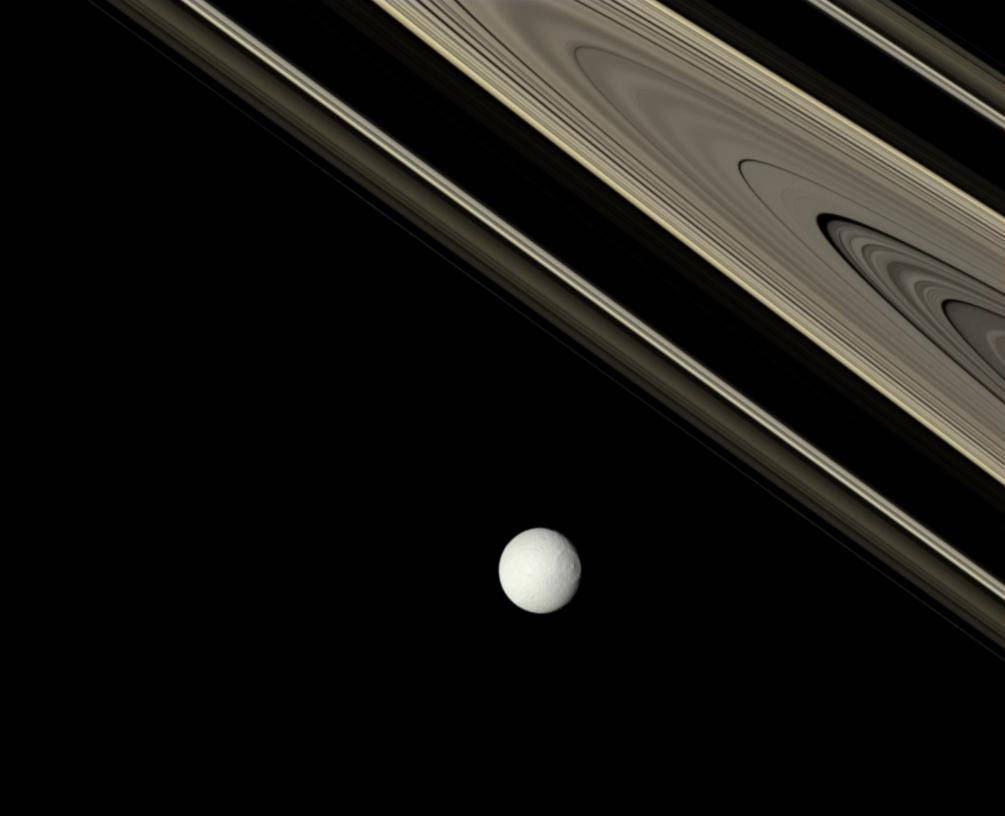
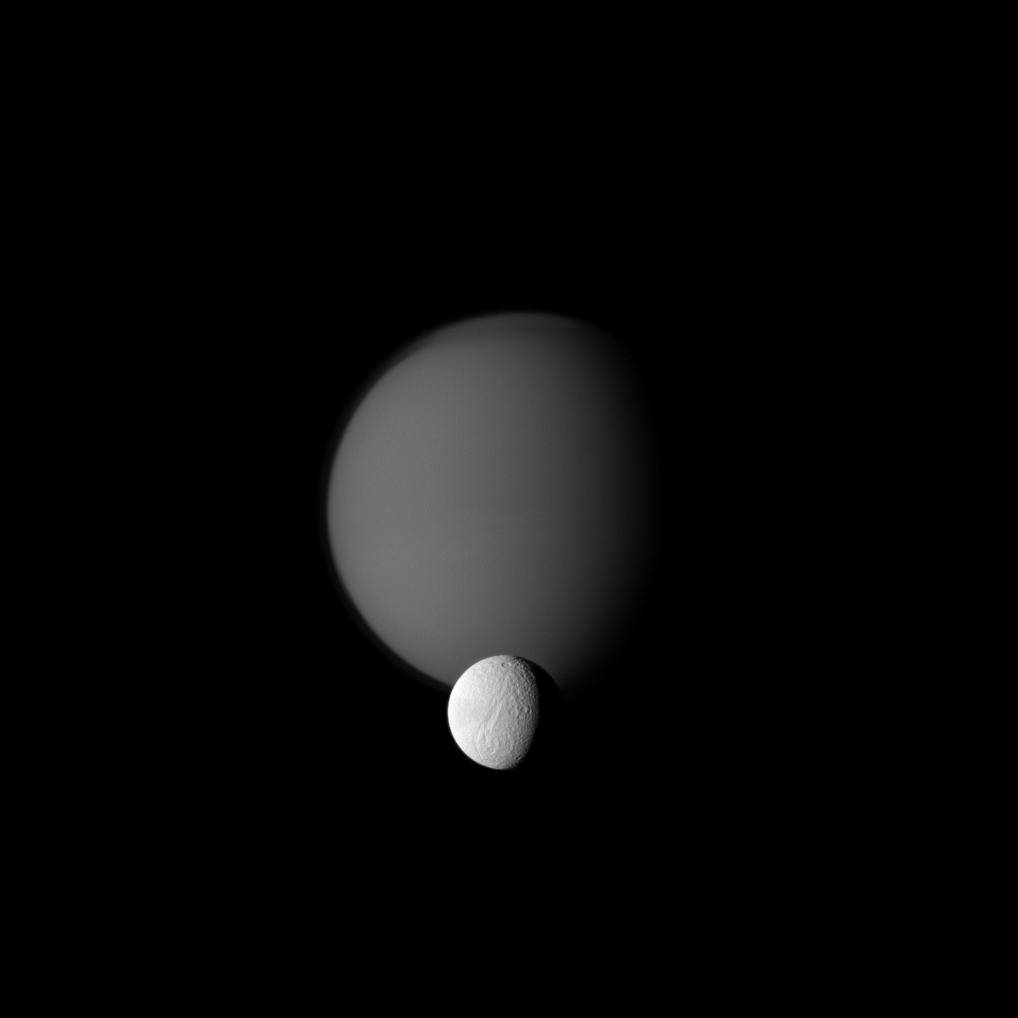
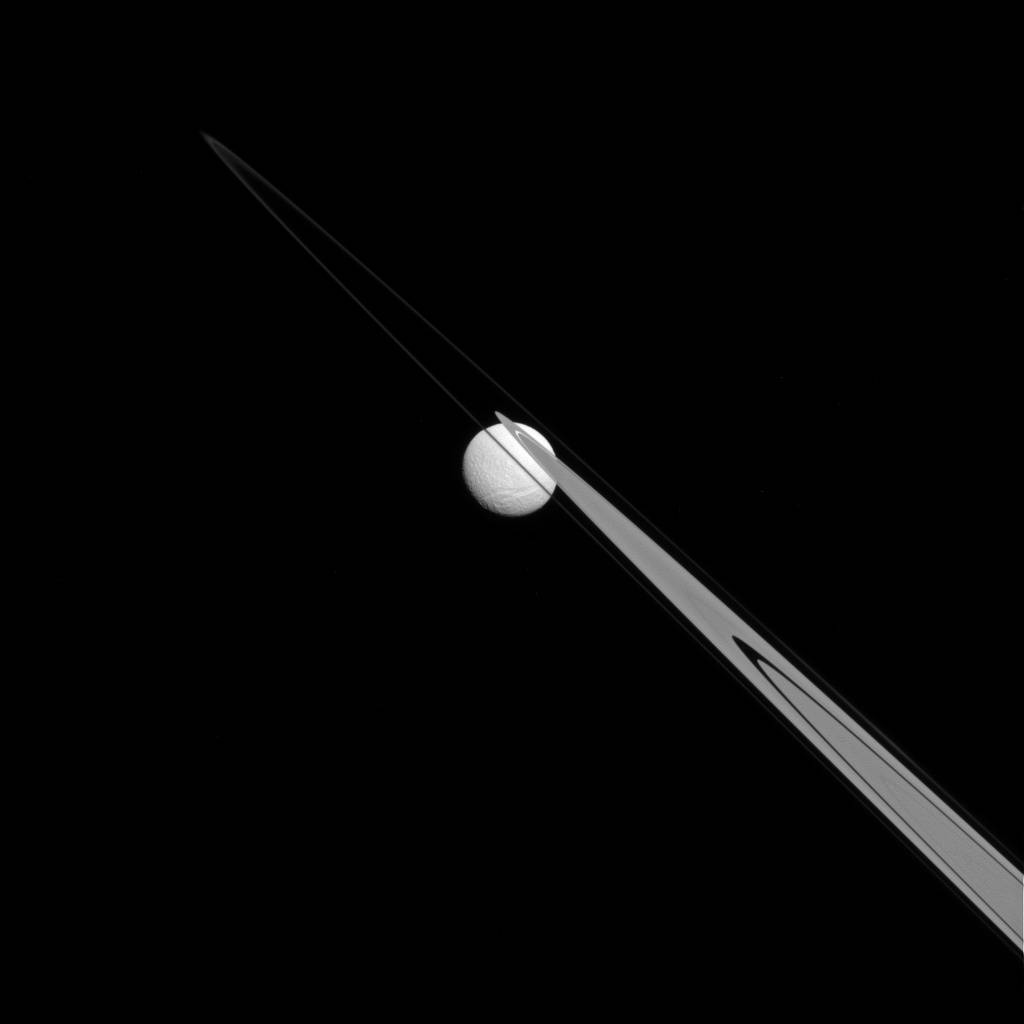
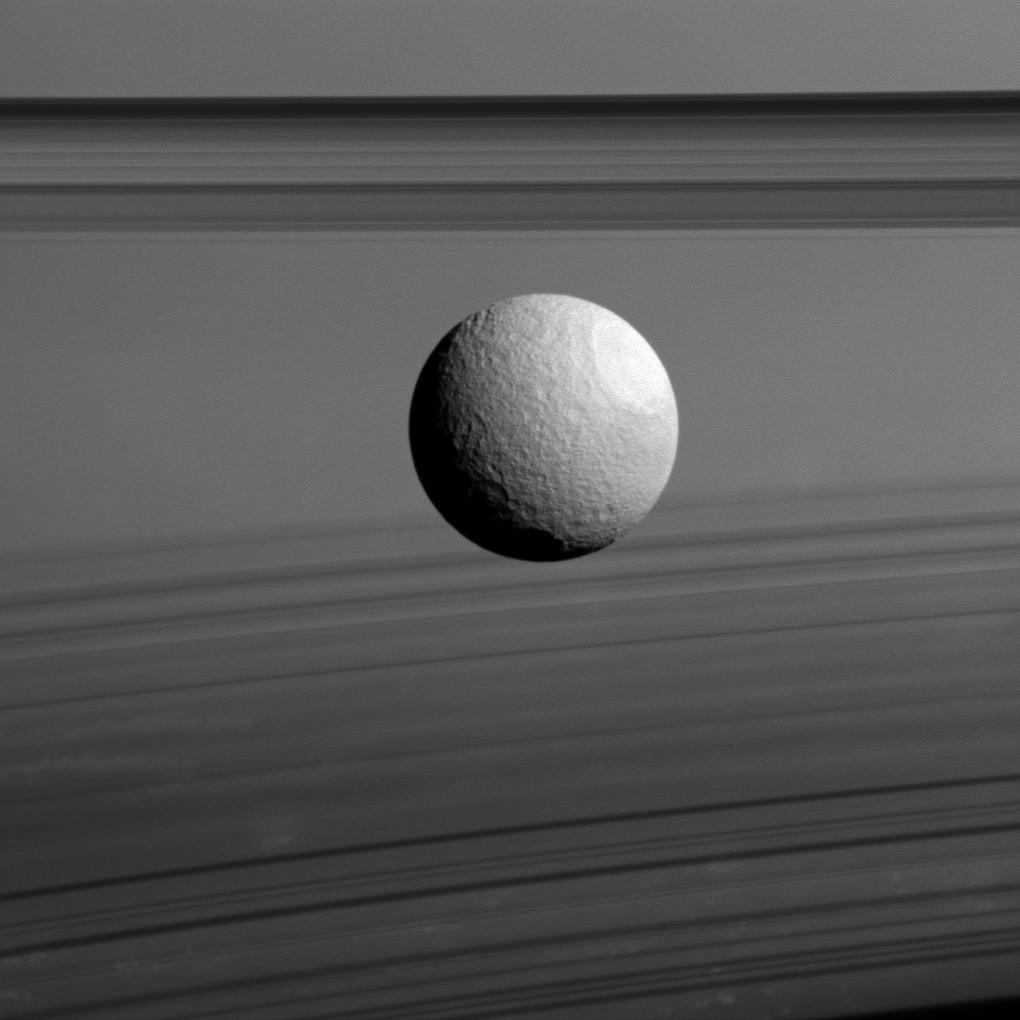
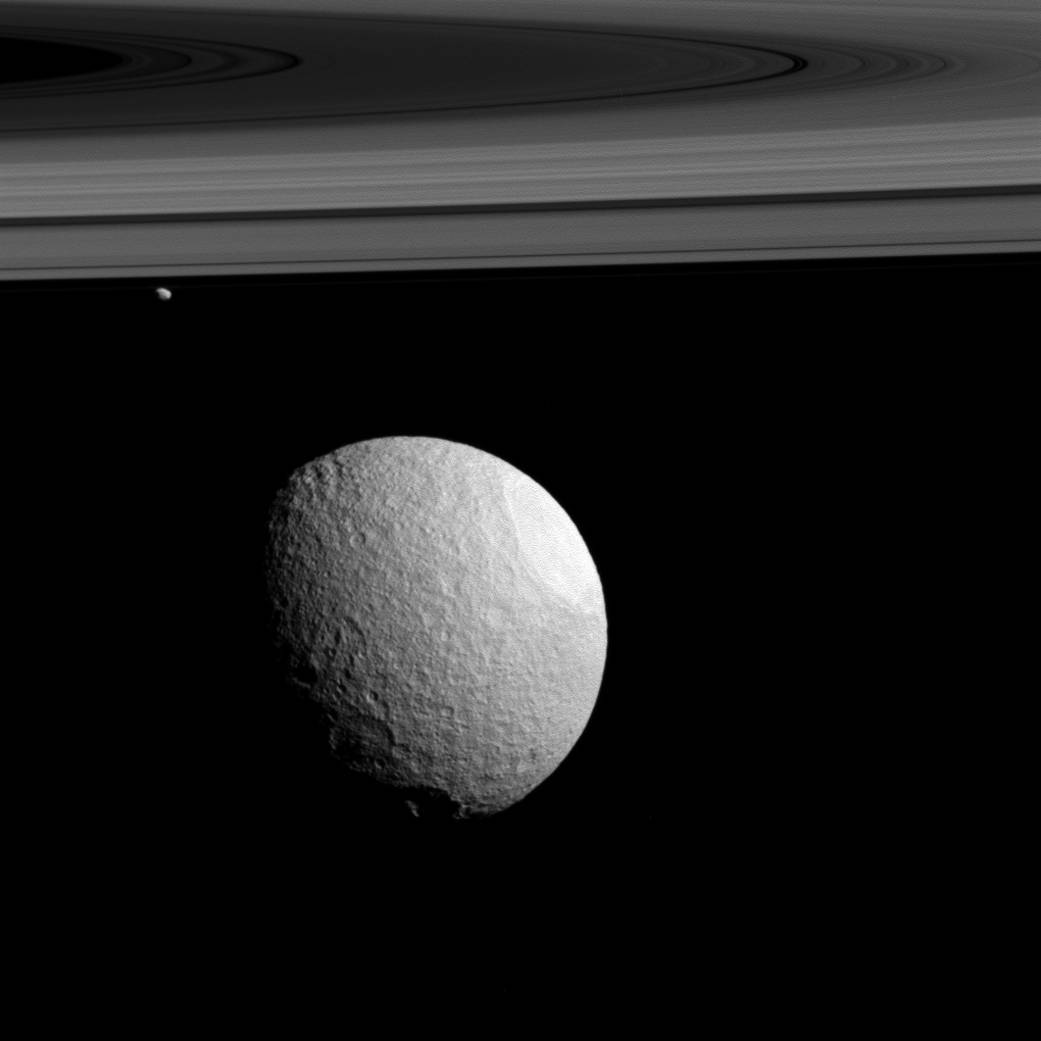
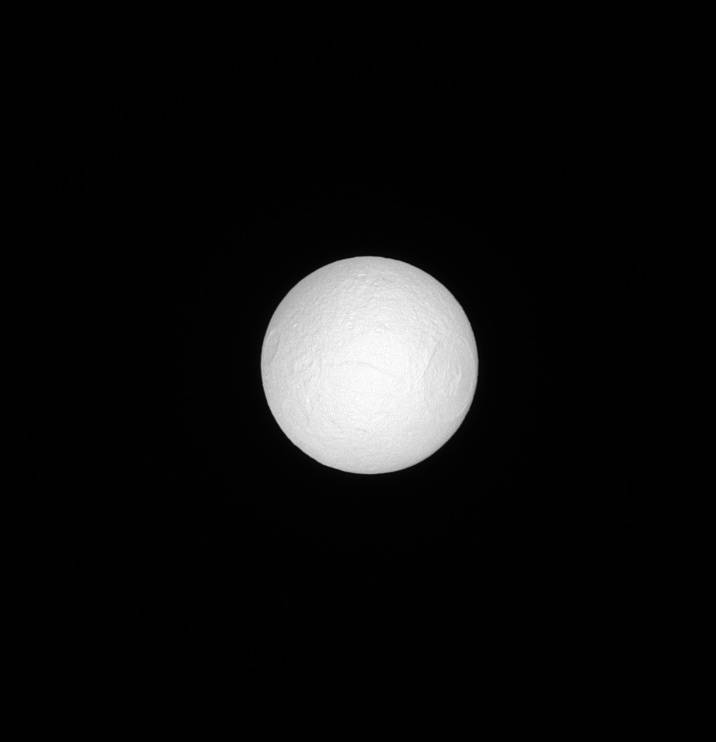
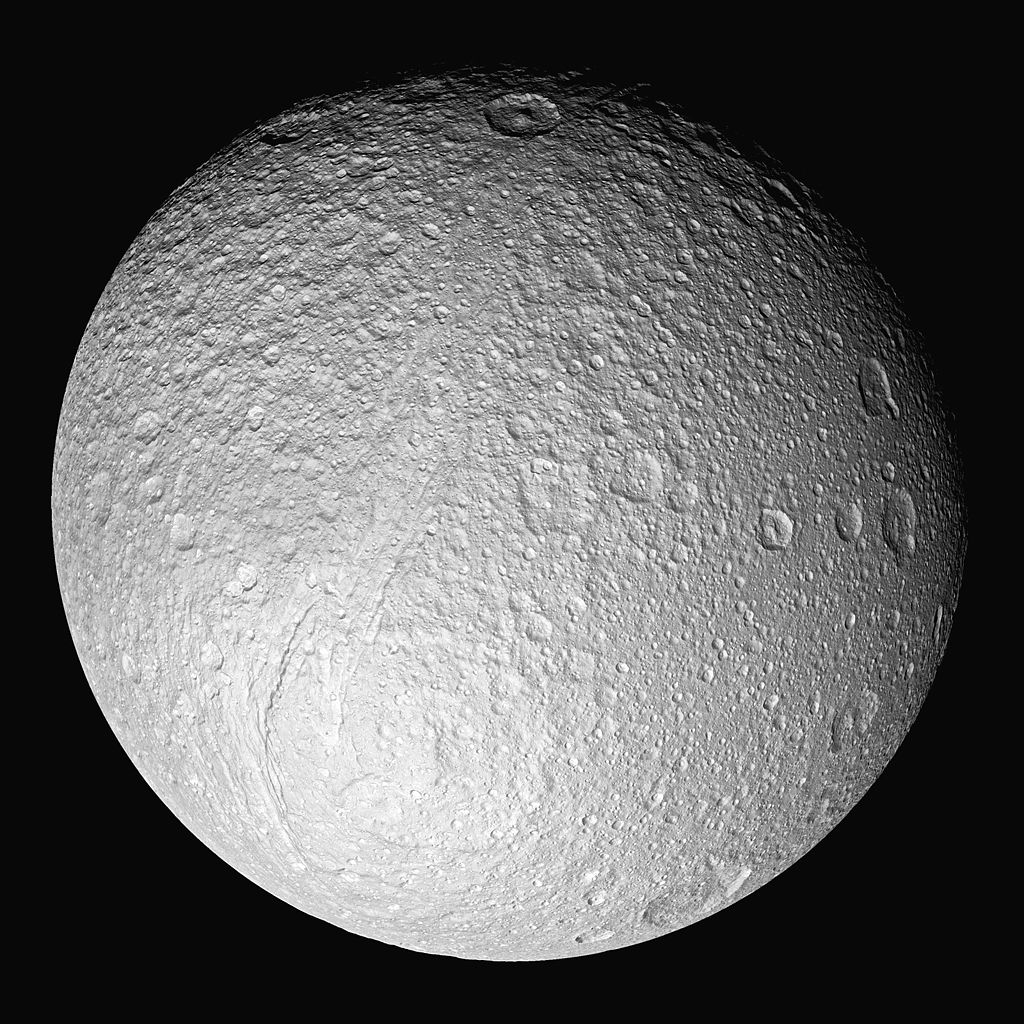
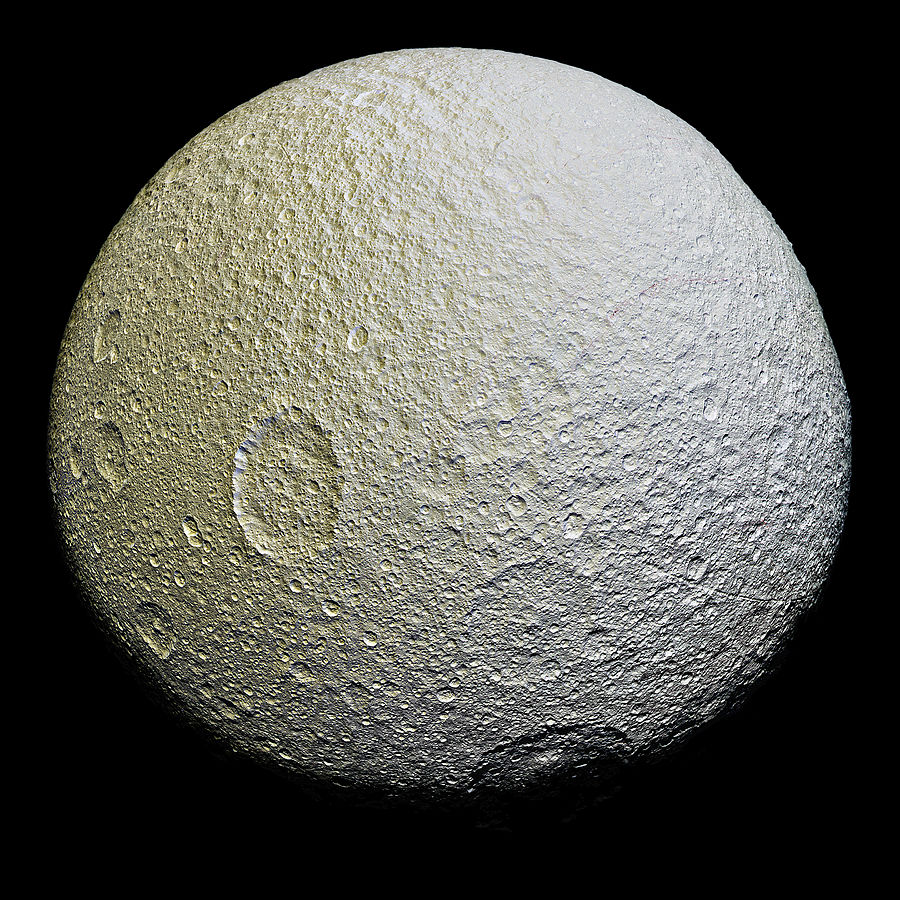
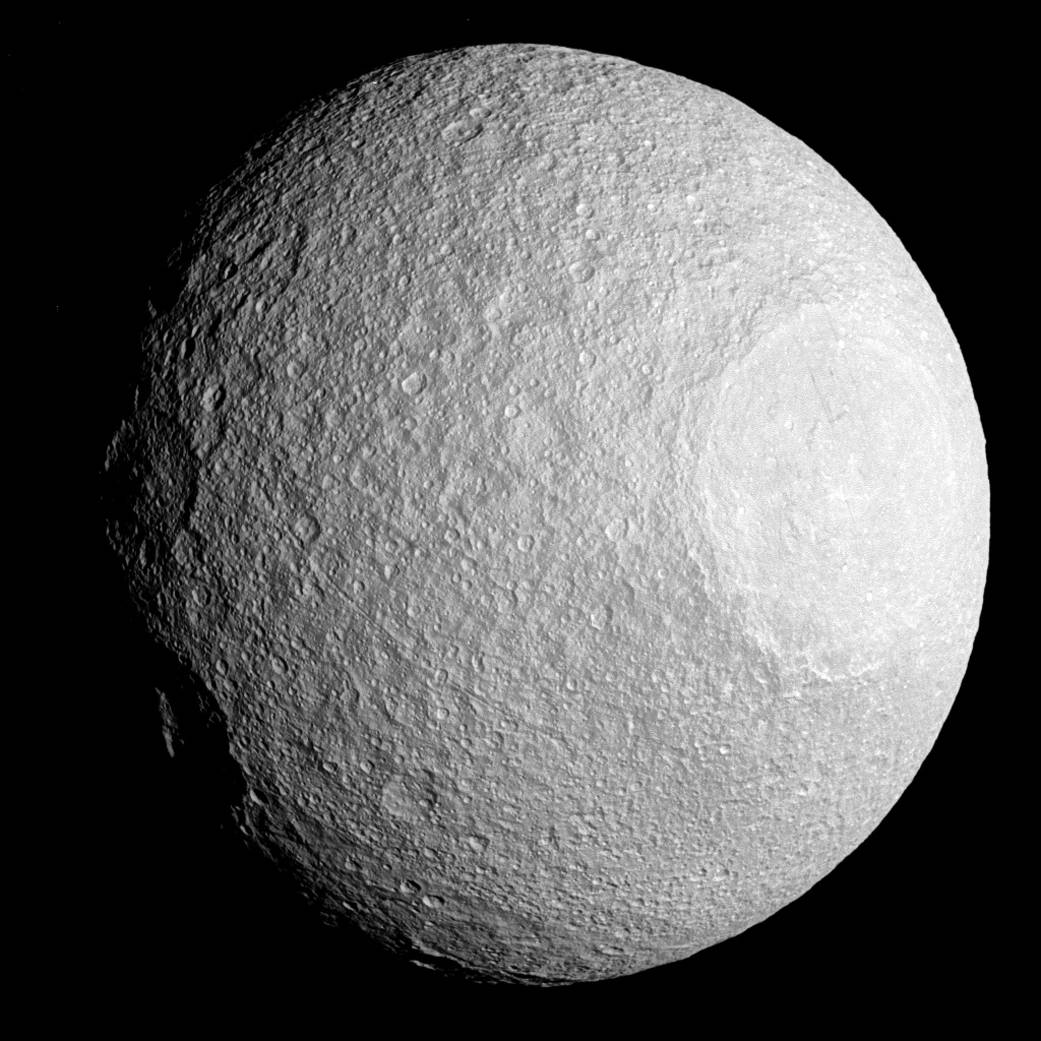
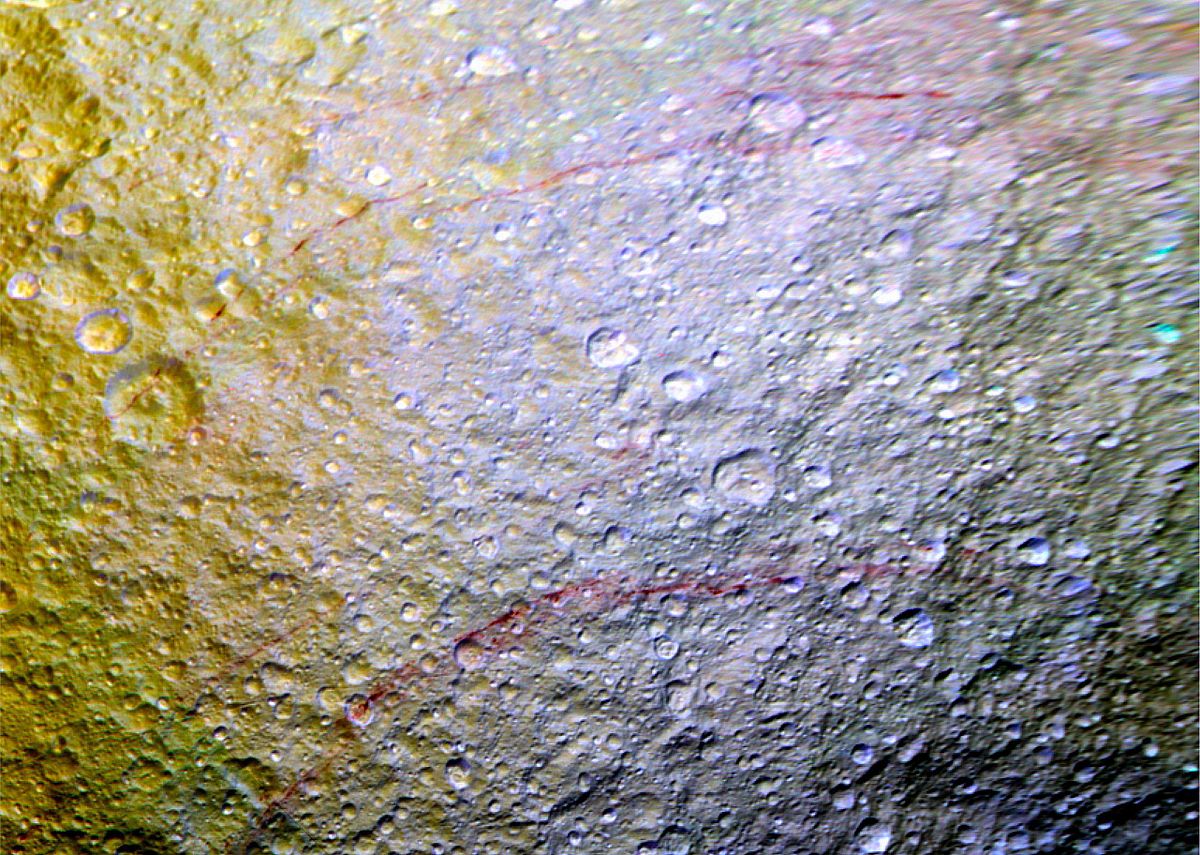
Colour Contrast
Saturn's moons
Tethys Orbital Plane
Tethys Hovers
Moons And Rings
Global View
Giant Rift Ithaca Chasma
Tidally Locked
Tethys
Red Streaks














